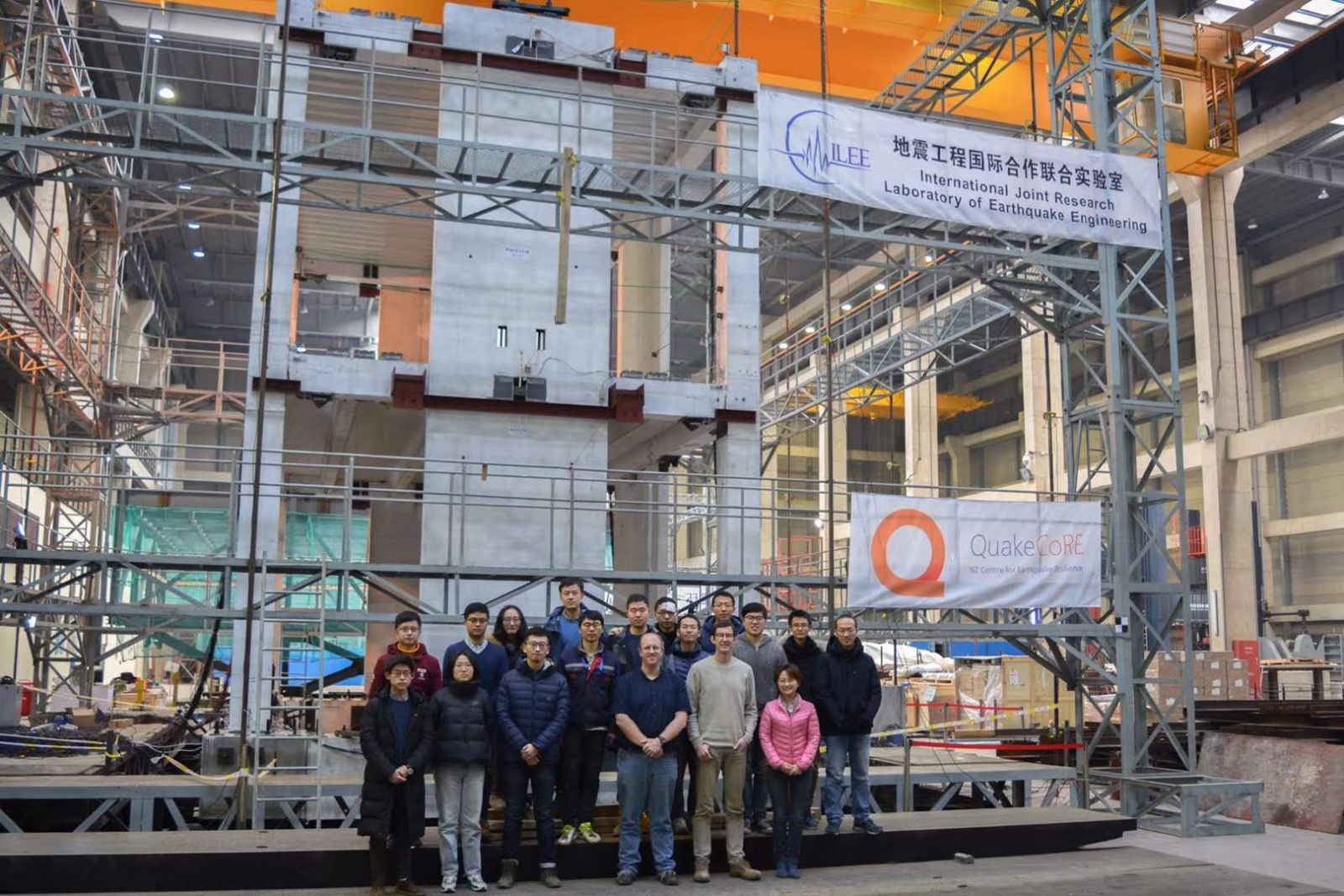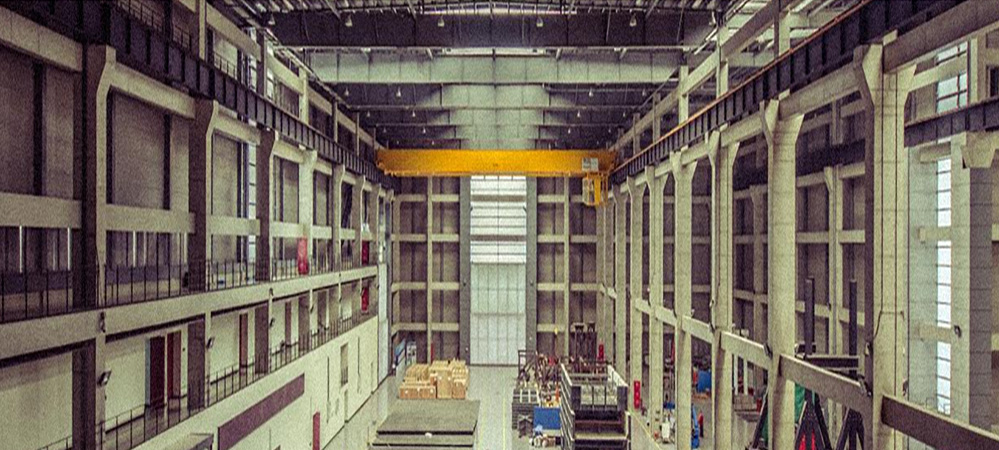
News & Events
The researchers from Tongji University, the University of Auckland, and University of Canterbury in collaboration with New Zealand Center for Earthquake Resilience, QuakeCoRE, completed testing a low-damage full scale concrete wall building on the large shake table at Jiading campus, Tongji University, on January 2019. The joint research project is collaboratively funded by ILEE and QuakeCoRE. The PI of the project is Prof. Ying Zhou (Tongji University) and the Co-PI is Prof. Rick Henry (University of Auckland). Many other researchers, such as Dr. Yiqiu Lu (research fellow at the University of Auckland), Prof. Geoffrey Rodgers (University of Canterbury) and other research graduates at Tongji University have been involved in the project.
The test building was a two-story (10m6m8m) low-damage concrete wall structure, utilizing rocking wall as the primary lateral load resisting system. The test structure was designed incorporating new earthquake resistant technologies including post-tensioned rocking wall systems, energy dissipating devices (e.g., viscous, steel and lead dampers) and slotted beams. The test building was subjected to 40 earthquake ground motions, from quite small intensity earthquakes (about 25-years return period) to the largest possible earthquake in Wellington, New Zealand. Simulating the types of earthquakes that Wellington might experience including a rupture on the Wellington fault and on the offshore Hikurangi fault that would produce long-duration earthquakes.
The result of the test structure was extraordinarily satisfactory based on the test observations and data collected. The building withheld earthquakes greater than it was designed for, and the building’s lateral displacement remained below the design targets. The building experienced had no significant structural damage and only superficial spalling and cracks in the concrete after the shaking with a peak ground acceleration in excess of 0.8g. The damage to the wall base connection where rocking occurred was superficial - minor spalling of concrete - but no structural damage. Cracks in the floor were of a small enough width, and they were not necessary to repair and had no significant effect on the building performance, which minimized repair and avoided the need to demolish and rebuild after severe earthquakes. The test results should give people confidence in the resilience of new-built and existing buildings incorporating these technologies.

Group photo before the test building on the shake tables at Jiading campus, Tongji University






 loading......
loading......